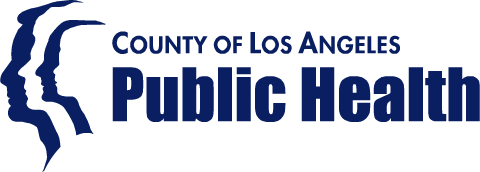|
|
|
Page
updated
on
8-14-24 |
| As a
supplement
to LAC
DPH's
Prevention
of
COVID-19
Transmission
in
Skilled
Nursing
Facilities
Health
Officer
Order,
this
document
is a
resource
for
skilled
nursing
facilities
(SNF) to
build
the
appropriate
infection
prevention
and
control
(IPC)
training
program
at hire,
annually,
and as
needed
for all
staff
including
their
Infection Preventionist
(IP).
Important
to
developing
effective
IPC
programs
for your
staff
are the
following
recommendations: |
- Each facility should complete an Infection Control Risk Assessment Prioritization annually to understand their facility's unique education and resource needs, and use the results of this assessment to inform any changes to their IPC training programs.
- Document staff training including the course completed, date completed, and reason for completion (e.g., at hire, annual, as needed).
- Consider staff's educational needs when building their IPC trainings (e.g., passive learning with videos, online modules, etc. versus active learning via teach-back method).
- Provide education in relevant languages.
- Include targeted training above the minimum requirements when appropriate (e.g., food-borne illness training for dietary/kitchen staff; central line-associated blood stream infection [CLABSI] and/or catheter-associated urinary tract infection [CAUTI] training for licensed nurses especially in SNFs with subacute/ventilator units).
|
| |
|
Basic
infection
prevention
education
training
for
non-IP
staff
should
include
the
domains
below.
Facilities
may
mix-and-match
modules
from
different
educational
resources
to form
the most
appropriate
IPC
training
for each
type of
staff,
e.g.,
certified
nursing
assistants,
housekeeping,
dietary,
administrative,
etc.,
while
ensuring
that the
domains
below
are
included: |
- Hand Hygiene
- Standard precautions (including Personal Protective Equipment)
- Transmission-based precautions (including Personal Protective Equipment)
- Environmental Cleaning and disinfection
- Respiratory Hygiene, Cough Etiquette and Source Control
- Injection Safety and Point of Care Testing*
- Antimicrobial Stewardship*
*Applicable to licensed nursing and/or clinical provider staff.
|
| |
| For
infection
prevention
and
control
training
requirements
for the
SNF IP
role,
please
see
CDPH AFL
20-84
and/or
LAC
DPH's
Building
an
Infection
Prevention
Program
Information
for the
Facility
(step 2). |
| |
| This
is
relevant
to
certain
roles
and
departments
e.g.,
nurses,
pharmacists,
and
clinical
prescribers. |
| |
|
Table 1
-
Recommended
for the
SNF
Infection
Preventionist
(IP) |
|
|
| |
|
Table 2
-
Recommended
for all
other
SNF
staff
besides
the IP
(e.g.,
licensed
nurses,
certified
nursing
assistants,
rehabilitation
including
Physical
therapists/Occupational
therapists/Speech
and
language
therapists,
housekeeping/environmental
services
including
laundry,
activities,
social
work,
administration,
facility
engineers,
etc.) |
|
|
| |
Staff Training and Education (presentations and videos)
Use the following materials to train and educate staff on core infection prevention practices of hand hygiene, environmental cleaning and disinfection, and use of personal protective equipment (PPE).
|
|
Presentations |
- Pre/post test (PDF): Use the pre/post tests to evaluate staff knowledge before and after staff education with the above Training Slides.
- Flipcharts: Flipchart materials are a resource for ‘on the go’ training. Flipcharts will be distributed in person during your onsite assessment. Alternatively, you can print them in-house. We recommend printing on ledger sized (11” x 17”) paper, double-sided.
|
| |
|
Reminders in the Workplace (posters, flyers) |
|
|
| |
|
Transmission Based Precautions Posters |
- LAC DPH Acute Communicable Disease Control Program Transmission Based Precautions signage is located in section 3 of the Main SNF webpage. Follow this link for the SNF Main Page.
|
|
|
Evaluation and Feedback (Adherence Monitoring)
Regular monitoring with feedback of results to staff can maintain or improve adherence to hand hygiene, environmental cleaning and education, and contact precautions practices. Use the following tools to identify gaps and opportunities for improvement. |
|
|
|
|
|
The
content
on this
webpage
is
adapted
from the CDPH Healthcare-Associated
Infections
(HAI)
Program
vSNF Workgroup to Prevent MDRO.
|
|
Additional Resources
|





